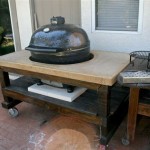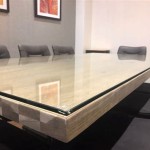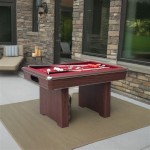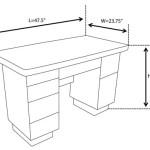How To Get Rid Of Scratches On Glass Dining Table
A glass dining table offers a sleek and modern aesthetic to any dining space. Its transparency enhances the feeling of openness and allows for easy coordination with various décor styles. However, the smooth surface of glass is susceptible to scratches, which can detract from its pristine appearance. Understanding the causes of these scratches and implementing appropriate removal techniques are essential for maintaining the beauty and longevity of a glass dining table.
Scratches on glass surfaces typically occur due to abrasive contact. Everyday objects, such as ceramic dinnerware, cutlery, abrasive cleaning cloths, and even dust particles, can cause microscopic to visible damage when dragged across the glass. The severity of the scratches depends on the hardness of the object causing the damage and the amount of pressure applied. Fine scratches, often referred to as surface haze, are usually the result of repeated wiping with slightly abrasive materials. Deeper, more noticeable scratches are often caused by sharper or harder objects coming into direct contact with the glass.
Before attempting any scratch removal method, it is crucial to assess the depth and severity of the scratches. Light scratches, often invisible except upon close inspection, can usually be addressed with less aggressive polishing techniques. Deeper scratches, those that can be easily felt with a fingernail, may require more abrasive compounds and a more involved repair process. Incorrectly identifying the scratch depth can lead to further damage, so careful examination is essential.
Proper cleaning is the first step in minimizing scratches and preventing further damage. Regular cleaning with a soft, lint-free cloth and a glass cleaner removes dust and debris that can act as abrasives. Avoid using abrasive cleaners or scouring pads, as these can introduce new scratches or worsen existing ones. Promptly wiping up spills can also prevent staining and reduce the likelihood of sticky residues attracting abrasive particles. A microfiber cloth is ideal for routine cleaning and minimizing the risk of scratching.
Key Point 1: Assessing and Preparing the Glass Surface
Prior to initiating any scratch removal process, thorough cleaning of the glass surface is paramount. This involves removing all traces of dust, grease, and other contaminants that could interfere with the polishing or repair process. Use a dedicated glass cleaner or a mixture of water and vinegar, applying it liberally to the affected area. Wipe the surface clean with a microfiber cloth, ensuring no residue remains. This step not only provides a clean surface for repair but also allows for a more accurate assessment of the scratch depth and severity.
Once the glass is clean and dry, carefully examine the scratches under good lighting. A magnifying glass can be helpful in determining the depth and extent of the damage. Run a fingernail gently across the scratch. If the fingernail catches, the scratch is likely deep and may require a more aggressive repair method. If the fingernail glides smoothly, the scratch is likely superficial and can be addressed with a less abrasive polishing compound.
Protecting the surrounding area is crucial to prevent unintended damage during the repair process. Cover the table frame and any adjacent surfaces with painter's tape or protective sheeting. This will shield these areas from accidental contact with polishing compounds or tools.
Key Point 2: Mild Scratch Removal Techniques
For light scratches and surface haze, several mild abrasive compounds can be effective in restoring the glass's clarity. These methods are generally less aggressive and pose a lower risk of further damage if applied correctly.
One commonly used method involves applying a paste made from baking soda and water. Mix baking soda with water to create a thick paste. Apply the paste to the scratched area using a soft, damp cloth. Gently rub the paste in a circular motion for several minutes, applying light pressure. Rinse the area thoroughly with clean water and dry with a microfiber cloth. Repeat the process if necessary. Baking soda is a mild abrasive that can help to buff out superficial scratches.
Another option is to use a commercial glass polishing compound specifically designed for removing minor scratches. These compounds typically contain finely ground abrasives that gently polish the glass surface. Follow the manufacturer's instructions carefully, applying the compound with a soft cloth or polishing pad. Work in small, circular motions, avoiding excessive pressure. Buff the area clean with a fresh microfiber cloth. Ensure the chosen compound is explicitly labeled for use on glass, as some polishing compounds are designed for other materials and can damage glass.
Toothpaste, particularly non-gel varieties, can also be used as a mild abrasive. Apply a small amount of toothpaste to a damp cloth and rub it gently over the scratched area in a circular motion. Rinse thoroughly and dry with a clean cloth. This method is best suited for very minor scratches.
For all of these methods, it is crucial to test the compound on an inconspicuous area of the glass first to ensure it does not cause any discoloration or further damage. If the test area shows no adverse effects, proceed with applying the compound to the scratched area.
Key Point 3: Addressing Deeper Scratches
Deeper scratches require a more aggressive approach, often involving the use of specialized polishing equipment and compounds. These methods should be undertaken with caution, as they carry a higher risk of damaging the glass if not performed correctly.
Cerium oxide is a polishing compound commonly used by professionals for removing scratches from glass. It is a relatively gentle abrasive that can effectively remove deeper scratches without causing significant distortion. Cerium oxide is typically mixed with water to create a slurry, which is then applied to the scratched area using a polishing pad attached to a rotary tool or a dedicated glass polishing machine.
The polishing process involves carefully moving the polishing pad over the scratched area in a slow, controlled manner. It is essential to maintain a consistent pressure and avoid overheating the glass. The polishing pad should be kept moist with the cerium oxide slurry throughout the process. Regular inspection of the scratch is necessary to monitor the progress and prevent over-polishing.
Using a rotary tool or polishing machine requires practice and skill. It is advisable to start with a low speed and gradually increase it as needed. Avoid applying excessive pressure, as this can create heat and distortion. Move the polishing pad in overlapping circular motions, ensuring complete coverage of the scratched area.
Once the scratch has been sufficiently reduced or removed, thoroughly clean the glass surface to remove any remaining cerium oxide residue. Inspect the area under good lighting to ensure that the scratches have been eliminated and that the glass surface is smooth and clear. It may be necessary to repeat the polishing process several times to achieve the desired result.
Deep scratches that are particularly wide or numerous may require professional repair. Glass repair specialists have the expertise and equipment to address these types of damage effectively. They may use techniques such as resin injection or specialized grinding and polishing to restore the glass to its original condition.
Ultimately, preventing scratches is always preferable to attempting to repair them. Using placemats, coasters, and protective pads can significantly reduce the risk of scratching. Avoid dragging heavy or abrasive objects across the glass surface. Regular cleaning with a soft cloth and a gentle glass cleaner can help to keep the glass free of dust and debris that can cause scratches.
By understanding the causes of scratches and implementing appropriate prevention and repair techniques, it is possible to maintain the beauty and longevity of a glass dining table for years to come.

How To Remove Scratches From Glass Furniture Glassdomain Blogglassdomain Blog

How To Get Scratches Out Of A Glass Table Simply Tablecloths

How To Repair Scratches In Glass Tabletops Glassnow

Are Glass Table Scratches Permanent Murray

Scratched Glass Table Resurfacing Scratch Removal

How To Fix A Chipped Glass Table An In Depth Guide West

How To Remove Scratches Out Of Glass

4 Ways To Remove Scratches From Glass Wikihow

How To Get Scratches Out Of Glass

Tips To Prevent Your Glass Tabletop From Scratches Or Shattering Derlook
Related Posts








